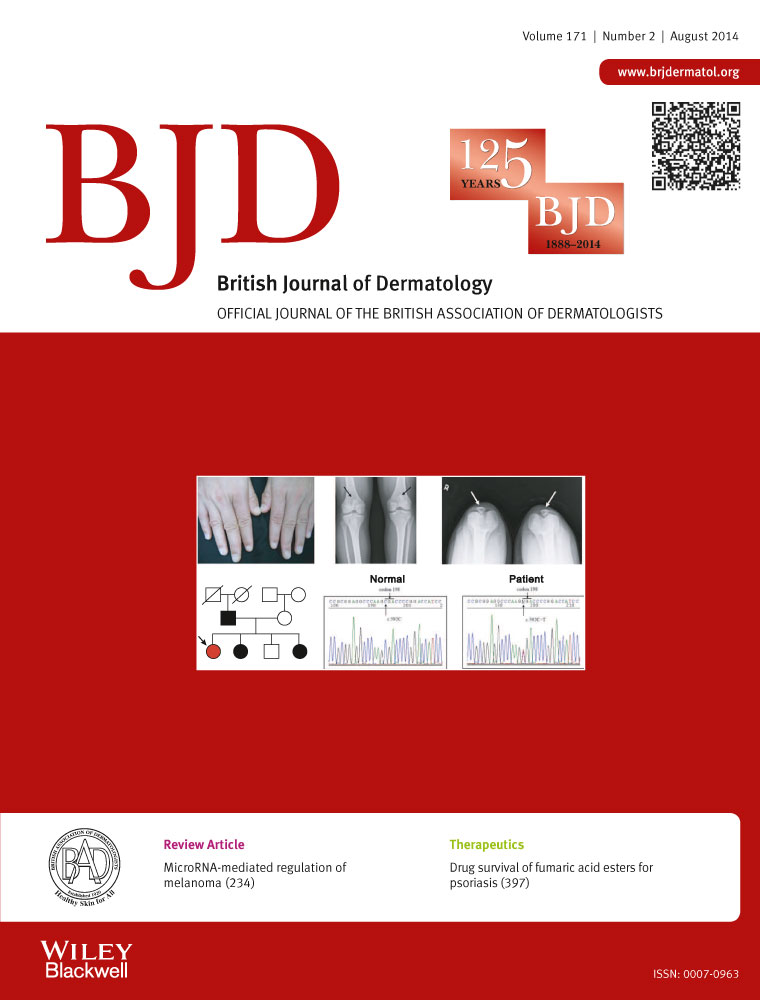Periostin levels correlate with disease severity and chronicity in patients with atopic dermatitis
Funding sources:
This study was supported by a grant from the Ministry of Education, Culture, Sports, Science and Technology, Japan, and supported, in part, by the Adaptable and Seamless Technology Transfer Program through Target-driven R&D, JST.
Conflicts of interest:
None declared.
Summary
Background
Recent findings indicate that periostin, an extracellular matrix protein induced by T helper 2 cytokines, plays a critical role in the pathogenesis of atopic dermatitis (AD).
Objectives
To determine whether serum periostin level is associated with clinical phenotype in adult patients with AD.
Methods
An enzyme-linked immunosorbent assay was performed to determine serum periostin levels in 257 adult patients with AD, 66 patients with psoriasis vulgaris (PV) as a disease control and 25 healthy controls. Serum periostin levels were analysed together with clinical characteristics and laboratory parameters, including thymus and activation-regulated chemokine (TARC), lactate dehydrogenase (LDH), blood eosinophil count and total IgE. Immunohistochemical analysis evaluated the expression of periostin in association with various clinical phenotypes of AD. The effect of treatment on serum periostin level was also assessed.
Results
Serum periostin was significantly higher in patients with AD than in patients with PV and healthy controls. Periostin level was found to be positively correlated with disease severity, TARC level, LDH level and eosinophil count, but not with IgE level. Higher serum periostin level was observed in patients with extrinsic AD compared with patients with intrinsic AD; the positive correlation of disease severity disappeared in patients with intrinsic AD. Robust expression of periostin was detected in the dermis of patients with AD with erythroderma, lichenification and, to a lesser extent, scaly erythema. Serial measurement of serum periostin revealed decreased levels of periostin after treatment for AD.
Conclusions
Periostin may play a critical role in disease severity and chronicity in the pathogenesis of AD.




